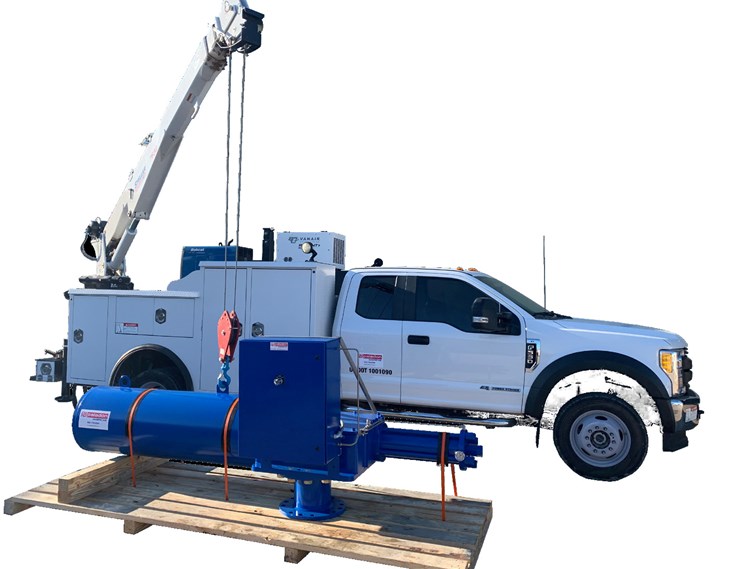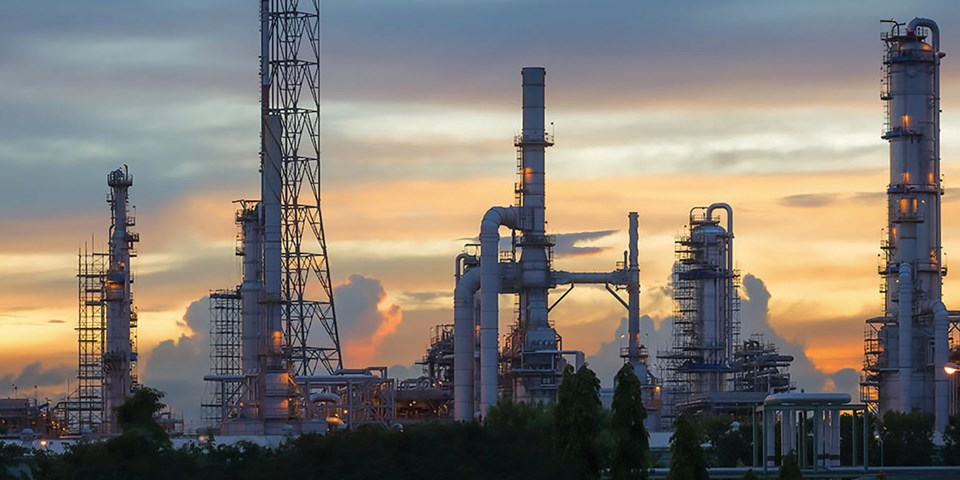By Stephanie Matas & Sarah Bradley
A Day in the Life
Leonardo Araya’s daily routine is divided in two stages. In the morning, his responsibilities include: preparing client quotes, providing customer service, and liaising with technicians, maintenance, and management. In the afternoon, Araya dedicates his efforts to preparing technical reports on any pipeline issues. “First, I check in with the boss who gives me feedback and updates on the pending tasks from the day before. Then I speak with customers about quotes, pricing, delivery dates, etc. At the end of the morning, I contact the technicians to collect all the field data, which includes any issues they came across in the field. I then use this data to prepare my technical reports,” says Araya.

Assessing Pipeline Integrity
The technical reports he prepares will address any areas of jeopardized integrity along the pipeline. Araya mentions there are three distinct methodologies used to assess the integrity of a pipe:
Hydrostatic Testing
Hydrostatic testing is a process in which piping systems, pressure vessels, and gas cylinders can be assessed for strength and leaks. These tests cannot be conducted while the component is in-service nor can they offer continuous monitoring of the equipment for leaks after the test is completed. Components often require hydrostatic tests after a shutdown or repair has been completed in order to validate the equipment that is being placed back in service. For the hydrostatic testing method, water is put into a pipe and pressure is applied; if the pipe breaks it is faulty. “If the pipe passes the test you can assess if any cracks in the pipe are spreading and determine the lifespan of the pipeline. For pipelines undergoing maximum operating pressures, the lifespan is typically 15 years, then a reassessment procedure should be conduct for a new life span,” Araya comments.
In-line Inspection
In-line inspection evaluates the integrity of a pipe or pipeline using ‘smart pigs’ to detect internal damage and irregularities such as corrosion, deformations, and cracks. Intelligent pigging can be done on many types of pipeline sizes without the need to stop the flow of materials. An inspection pig is loaded into a receiver at a valve or pump station that is specially configured for the task. Once received, sealed, and closed, the pig is driven down the line either by a cable (tethered) or by the flow of material (non-tethered). The pig then gathers important data on the presence and location of any irregularities on the inner walls of the pipe. “The pig uses a magnetic flux, which is trapped by the cylinder of the pipe and due to physics law, creates a magnetic field in the same shape as the cylinder. If any type of corrosion, dent, crack, or other deviation is detected in the magnetic field, the pig receives a signal and alerts operators of the issue,” Araya explains.
Direct Assessment
In scenarios where it is not feasible to conduct a hydrostatic test or in-line inspection, due many reasons including varying pipe sizes, bends, or valves, a direct assessment is conducted. “Direct assessment involves plenty of external inspection. The first step is to complete a pre-assessment,” Araya states. “All of the previous data sheets must be reviewed to prepare a feasibility analysis, which determines whether or not it is possible to conduct a direct assessment on the pipeline.” Sometimes a direct assessment is not possible due to volatile leakage, environmental concerns, or inaccessibility. Once direct assessment is deemed the appropriate method, engineers select the proper tools for the application and head to the field. “We are often walking in seemingly, the middle of nowhere, with all this extremely high-level technical equipment to make the necessary inspection and/or repair,” Araya laughs.

Case Studies of Carbon, Stainless Steel And Titanium Tanks
Araya is familiar with many types of high-grade CRAs and steels and the processes used to mitigate the risk of corrosion in each. In one case, Araya conducted an inspection at a paper mill plant, where the facility was required to upgrade a carbon steel tank to a stainless-steel model. “That is not a small expense, as all the valves and the entire weld needed to be changed. The mill had been replacing its carbon steel tank every three years. After careful consideration of its processes and following the behavior of the mill for eight years, it was determined that if the carbon steel could withstand corrosion for up to four years, while stainless steel would resist for 10 to 12 years. By replacing the tank, the application’s lifespan was increased, significantly changing the cost benefit relation.”
In some industries, higher-grade alloys such as titanium or Hastelloy are required for applications that need to withstand more hazardous environments. In one instance, while working in a copper mine, Araya handled the upgrade of a tank from stainless steel to titanium. “Titanium has a very high resistance to most types of corrosion in current thermodynamic and atmospheric conditions,” he explains.
Even when a high-grade material is being used, coatings for tanks should still be considered an asset. “Companies are paying for coatings, so they need to be properly checked and maintained. The lifespan of a coating must be adhered to. Often it is applied very well the first time and it is expected to last forever, but this is not the case. It does not matter if it has been 7 or 20 years since the coating was applied, you must be aware your coating’s performance.” Araya notes that while stainless steel tanks have longer lifespans, if the proper maintenance, such as the reapplication of passivants, inhibitors or coatings are not upheld, companies will ultimately lose profit. “You will pay nearly double, if not three times for a stainless-steel tank than you would for a carbon steel tank. It is crucial to consider your coating.” Many maintenance workers, however, prefer carbon steel in components such as butterfly and ball valves, as they are more readily available and frequently replaced. “Sometimes the ball itself will be replaced with stainless steel.”

Managing Data and Valve Assets
Araya explains the data management of assets is a statistical process. Capability analysis is used to logically estimate where corrosion will appear in the future. “In analyzing the data, you can expect the increase of corrosion rates in some areas.” There are two types of data: data collected and data observed. Araya offers an interesting case study on data collection and observation:
About a year ago in Chicago, Araya and his team installed a data collector in a valve. They studied the valve, put a GPS on it, and collected data for three days from the same sensor point. On day one and two, there was no inconsistent data. But on day three, the readings were strange. “We thought to ourselves, ‘What happened?’” The team examined the fluctuations overnight, including the impact of the rain, to see why the conditions changed. Moisture is considered conductive and can affect readings, which is why during the dry season, these inconsistencies did not occur.
Upon observation, Araya and his team saw railroad tracks about 300 feet away from the valve, and it was determined that the railroad tracks were conducting an AC current. The tracks ran parallel from the transmission lines, which caused the transmission lines to create an electromagnetic field. This induced an AC current from the railroad tracks, which translated to AC current corrosion on the pipeline, and the pipeline discharged the current at that point. “The first two days registered about 2 amps of current but when it rained, as moisture is very conductive, we had readings above 16 amps. 16 amps of a stray current is not okay, and the operator had no idea,” says Araya. “We were supposed to be conducting a rudimentary inspection and expected nothing out of the ordinary – the report was already technically written, but that is not what happened when we received the data. The data alone means nothing if you do not observe what is happening on the ground. It helps you to better clarify and understand things as well.”
Looking Forward
Araya believes the pipeline industry is moving toward automation and more advanced management technologies. He mentions the adoption of telemetric operations, which allows the control of excavators, trucks, and other industrial equipment, to be operated remotely off-site. A small group of maintenance people would be left on-site, but most operations in the future may be handled from an office. “Technicians would only be responsible for checking the sensors, cameras, and maintenance for maintaining automation.” As global temperatures continue to rise, Araya explains it is important that new materials be developed because components like valves will be affected, and their integrities compromised.


